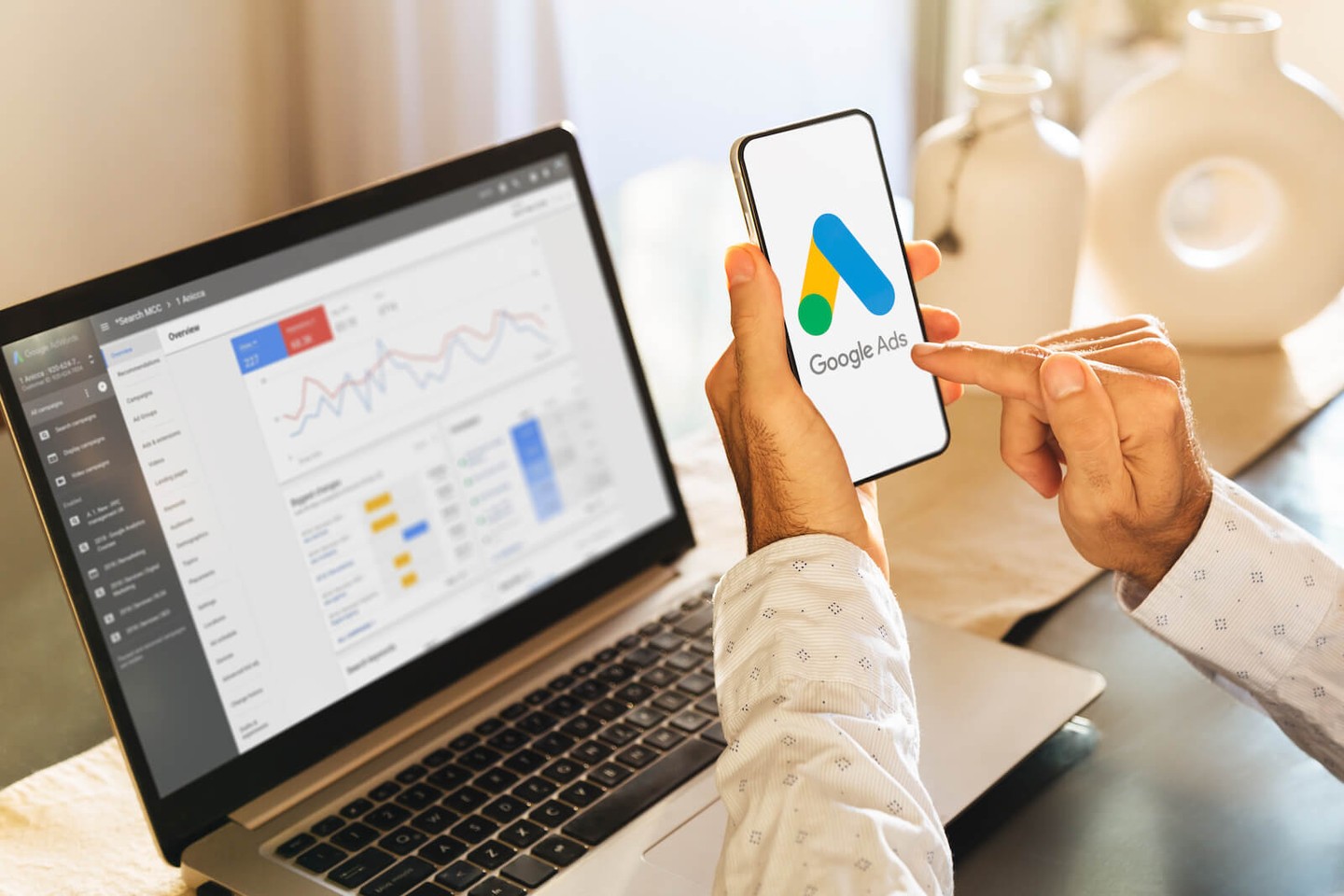How to Optimize Your PPC Campaigns for Mobile
by Joseph Jones • August 23, 2024
Smartphones have become indispensable tools in our daily routines, which presents a fantastic opportunity for marketers and advertisers alike.
Given that approximately 53% of paid clicks occur on mobile devices, it’s evident that pay-per-click (PPC) mobile advertising is an effective way for brands to increase brand awareness.
PPC advertising generates conversions 50% more effectively than organic efforts, so it’s in a brand’s best interest to optimize their mobile PPC campaigns. Along with these obvious benefits, PPC ads have a higher click-through rate (CTR) and a higher return on investment than other ad types.
In this article, we’ll explore why mobile PPC optimization matters and share strategies for engaging mobile users. Whether you’re new to mobile advertising or looking to refine your approach, understanding these strategies can improve your campaign’s success.
Create Mobile-Friendly Pages
If you’re new to mobile PPC campaigns, your initial focus should be on user-friendly landing pages. While an optimized desktop landing page is great, users are much less likely to convert if the mobile page looks jumbled and disorganized.
To ensure your mobile landing pages are effective for mobile users, provide easy navigation, clear CTAs, and fast loading times.
Simplicity is key when designing a mobile page. Incorporating a catchy explainer video or bright graphics isn’t necessarily bad, but you want to ensure these aspects don’t affect the user’s page navigation. You want a potential customer to move naturally through your page without getting overwhelmed.
Along with a simple single-column layout, you can incorporate a CTA with a sticky bar to subtly follow your visitors as they scroll.
Keeping things simple and concise also extends to landing page copy. Mobile users have limited screen space, so your copy needs to get to the point. When writing copy, the most important information should be immediately available.
Utilize Mobile-Specific Ad Formats
When creating mobile ads for your PPC campaign, you must identify the right ad format for your brand. There are typically four mobile ad types: banner, video, rich media, and native ads.
Advertisers can embed banner ads at the top or bottom of the screen for users to tap. These ads are some of the most effective, but banner ad blindness is a concern to consider.
Rich media ads are similar to banner ads. They have the same appearance but with multimedia elements, including audio, video, or animation. These are more engaging than traditional banner ads and increase the chance of a click.
Native ads blend into the user experience, so they deliver ads that feel organic. When an ad matches the site’s aesthetic, it is less intrusive to the user. These ads are often much more expensive, but 87% of consumers prefer native ads over banner ads.
Video ads are another option for brands looking to increase their CTRs. These ads are highly engaging and appear as a typical banner or pop-up at any point while a user is on your site.
Utilizing “rewarded” videos can be an effective tactic because it gives users a clear incentive to view the ad, which may include free shipping or other privileges.
Keyword Targeting for Mobile
Choosing the right keywords is a vital part of your PPC ad campaign. Choosing the right keyword can help you reach your target audience and new potential customers. If you choose the wrong keywords, you can waste valuable ad budget and reduce your return on investment. You can choose from four categories of keywords:
- Branded terms: Ideally, you’ll want to command all branding terms related to your business to ensure your site appears when searched. If you rank just below a competitor, you may want to bid on a competitor’s brand name to use in landing page copy. This strategy can help bolster your visibility and redirect traffic to your site.
- High-intent terms: Advertisers can utilize these keywords when customers are at the end of their buying journey. Using high-intent keywords like “free delivery” or “sale” can help customers finalize a purchase when exploring your website.
- Peripheral terms: Peripheral keywords are not directly related to your services but broadly connect to your niche. If you compile a list of peripheral root keywords, you can create relevant add groups with the help of tools like Google’s Keyword Planner. Grouping relevant keywords will make it easier to target your ads once you launch your campaign.
- Product or service terms: Product terms directly relate to your services or products on your landing page. These terms are helpful if a potential customer searches for a specific product before buying it. These keywords get users on your site and increase the chance of conversion.
Implement Conversion Tracking for Mobile
Solid conversion tracking is the backbone of a successful PPC campaign. Without tracking your customer’s touchpoints, you’re missing out on critical data that can cause overbidding and poor budget allocation.
Along with traditional native conversion tracking on GA4, call tracking is also useful for mobile campaigns.
Call tracking allows you to track the source of your incoming leads. This method attributes a unique number to a campaign, giving you full visibility over what drives the most leads.
If lead generation is a campaign goal, this can be an effective way to track your customer journey. With an organized conversion tracking setup, you can focus your efforts where they’ll make the most impact.
Enhance Ad Visibility with Extensions
Ad extensions are a quick and easy way to take your mobile campaigns to the next level. Extensions increase the CTR of your ads, so every brand can benefit from incorporating ad extensions in their campaign. Ads with extensions often appear in a higher position than those without.
There are several different types of extensions to choose from, including:
- Location extensions: Mobile location extensions make it easier for customers to tap on your business location. This allows a customer to see photos of your business or receive directions to your brick-and-mortar location. Customers are more likely to visit your establishment if they know you’re nearby.
- Call extensions: Call extensions allow you to incorporate your phone number within text ads. If your business relies on lead generation through phone calls, these extensions make it easier for customers to call you directly.
- Review extensions: Allowing customers to share reviews or testimonials increases a potential customer’s likelihood of clicking. This AdWord extension makes your ads more prominent and visible, which is always beneficial when trying to increase user engagement.
- Callout extensions: With callouts, more text is highlighted to bring attention to discounts, shipping, and price matching. Google allows you to add up to four callouts in your ad. These extensions are incredibly effective in drawing attention to the unique selling points of your products or services.
Don’t Forget About the Quality Score
Once you’ve completed the above optimizations for your mobile PPC campaign, monitoring the Quality Score (QS) is crucial. This is a holistic score that Google generates based on the quality of your brand’s landing page, mobile display, ads, and keywords.
Advertisers should pay attention to the quality score to gauge the effectiveness of their campaign. For instance, a decrease in CTR across several ads could result in a lower score.
Keep in mind that separate Quality Scores exist for mobile and desktop platforms, so ensure your adjustments cater to each.
Remember, optimizing your mobile PPC ad campaign is an ongoing process. If you pay close attention to mobile-friendly landing pages, mobile-specific keywords, and effective ad extensions, your mobile PPC campaign can achieve optimal results and drive business growth.
Well, if you want to improve your PPC campaigns for mobile, reach out to us and we’ll do an analysis on your campaigns to see how you can better target mobile users!





